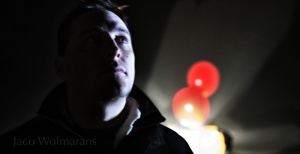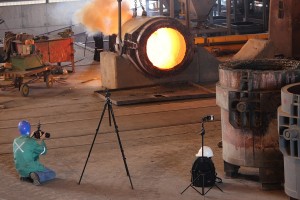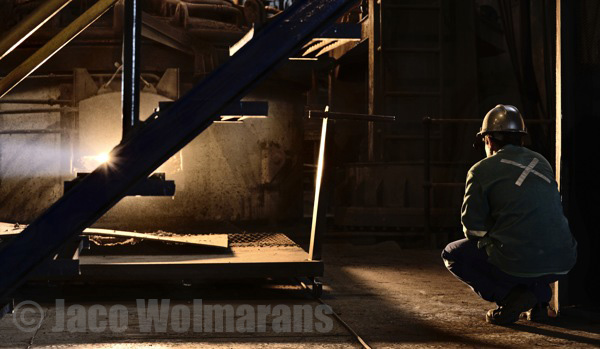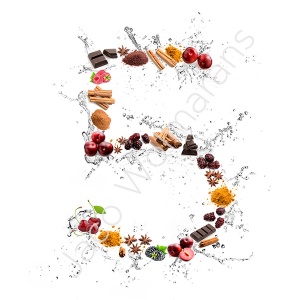 This was a once-in-a-lifetime opportunity, a pro bono job that one just could not turn down. Regardless of the risk. Matt Silver-Vallance was going to attempt a helium balloon flight (read party balloons, a suspended seat underneath and a pop gun wielded by an idiot with a death wish) from Robben Island to the mainland, Cape Town to raise funds for the Johannesburg Nelson Mandela Children’s Home. And when I say idiot, I actually quote Matt himself!
This was a once-in-a-lifetime opportunity, a pro bono job that one just could not turn down. Regardless of the risk. Matt Silver-Vallance was going to attempt a helium balloon flight (read party balloons, a suspended seat underneath and a pop gun wielded by an idiot with a death wish) from Robben Island to the mainland, Cape Town to raise funds for the Johannesburg Nelson Mandela Children’s Home. And when I say idiot, I actually quote Matt himself!
Now there are several things wrong with this picture. One is that it had never been done. It’s simply not allowed because of the busy heavy metal airspace from 2000 feet above sea level. On top of that, Matt had never flown anything before. He is a medical rep and paramedic. Thirdly, I was going to shoot this from a motorised paraglider, crossing the 10km of cold water with pilot Keith Pickersgill. This too had never been done. And for good reason – it’s lethally stupid to do without support. And with that, I mean a really big boat to land on should one have an engine out. Which, it turned out, was a very real possibility.
All this should have discouraged even the most dimwitted of photographers. To begin with, my images were to be handed over after the event, to be distributed worldwide, free of charge. That would be my contribution to the charity. Yet even the prospect of just being allowed to SLEEP on the world heritage site that is Robben Island was enough to convince me when Keith, a local paramotor instructor, called me to check my availability at short notice.
Keith is one of the most experienced pilots in the country and has an incident-free record which only comes from prudence and wide safety margins. Being a former paramotor pilot myself, I understood the risks and limitations. My background in imagery made this a natural fit. Which is how we found ourselves on a ferry to Robben Island one late Friday afternoon. The forecast was good, a light NW going West.
Flight nr. 13
The world media interest in this was intense. Not only because of the association with the hallowed names of Mandela and Robben Island. There was a darker reason. Only 12 such balloon flights had been attempted before, two pilots had died doing so and others had gone missing. This would be flight nr. 13. Get the picture?
So I was understandably upset when I discovered, on the ferry, that the one and only lens I could take on the flight, my 24-70mm f2.8 fitted to a Nikon D4, had somehow got bent and as a result, I could only zoom from 24-50mm. There was no turning back – we were committed, tents, food and sleeping bags packed for the night, since the balloon inflation was due to start the next morning at 4am. There would have been no time to dash back and get another lens, as we would have to launch as soon as conditions allowed. I had packed a little compact as a backup, a small Canon IX30S, but did not relish the idea of shooting with that on such a job. But at least I had another option. No pressure, noooo!
On arrival, we were bussed to the Robben Island runway – a largely overgrown, unused airstrip – which would be our camping spot for the night. Yes, tarmac. No mattress, hard ground, mist setting in, wet equipment … It sounded like it was going to be a fun evening. 
While the inflation crew set about putting out the 25m lines at each of the four helium inflation stations, making knots in the lines every few metres where the balloons would be attached, Keith, myself and our support guy and fellow pilot John Lazarus set up tent and tried getting as comfortable as possible. A flask of whiskey provided some creature comfort.
We woke the next morning at sparrows’ to an unworldly scene – trucks idling away on the runway, their headlights illuminating four groups of people inflating multi-coloured balloons in a thick cloud of mist. I grabbed my D4 and starting shooting away at 6400ISO, trying to capture the backlit scenes literally fuelled by truck exhaust fumes, making for some spectacular shooting opportunities. Matt, stressed to his limit, was dashing between the four stations, prodding, cajoling and encouraging the teams to work faster. Miraculously, the zoom had sorted itself out and I had full but scratchy travel on the lens.

4am portrait. Matt looking worried.
At once stage I managed to corner Matt for long enough to shoot a picture of him against the backdrop of some fumes and balloons, with John Lazarus giving me an edge light with his headlamp to fill in the side of Matt’s face. The shot is not sharp, unfortunately, due to camera shake or Matt moving, but considering that it was pitch dark, it had to do as Matt had to go – yet it somehow perfectly captures that eerie feel of the scene, its unworldliness. 
The volunteer teams working gave ample opportunities for behind-the-scenes shots, and since the fog was extremely thick and we were increasingly worried of not having a flight window, I shot what I could, not knowing if the opportunity would present itself again.
At dawn the fog was still thick, but the NW had come up and was gradually creating light spots and eventually, some blue sky patches. Around 11am, Keith suggested we launch the paramotor and recce the intended flight path from above the clouds. We radio’d Matt, who by now was strapped in and equalising the helium/weight ratio so that he was just slightly positively buoyant, to warn us before he cut away. It took a determined run in the light wind to get the tandem wing up and flying, but since we both knew what we were in for, Keith and I sprinted like mad. A steady climb up to 100m and we could see the mainland. Keith informed Matt, and before long, he cut away to the delight of the volunteers and hordes of international and national media.
 Up and up he went – much faster than intended, and soon his voice came over the radio saying that he was climbing at 10 meters per second. Which would put him into controlled airspace in a matter of minutes! Keith suggested he start popping balloons fast, which he did, with a poke stick, taking out the control balloons at the bottom of the pile. But still he was going up like a cork, us chasing at full power and not getting anywhere near his climb rate. Out came Matt’s BB gun, but it was underpowered, the pellets just bouncing off the higher balloons. Eventually he resorted to pulling down the individual lines and popping the bottom balloons by stick.
Up and up he went – much faster than intended, and soon his voice came over the radio saying that he was climbing at 10 meters per second. Which would put him into controlled airspace in a matter of minutes! Keith suggested he start popping balloons fast, which he did, with a poke stick, taking out the control balloons at the bottom of the pile. But still he was going up like a cork, us chasing at full power and not getting anywhere near his climb rate. Out came Matt’s BB gun, but it was underpowered, the pellets just bouncing off the higher balloons. Eventually he resorted to pulling down the individual lines and popping the bottom balloons by stick.
Then the descent rate started – in earnest. Matt lost his positive buoyancy and plummeted down. Bailing out his ballast to stop the dreaded oscillation that occurs due to the delayed effect of adding or dumping helium, Matt sank to right on the water line, enough for us to warn the follow boats that we had a splashdown. Fortunately, as soon as Matt’s water ballast bags hit the surface, their combined weight was neutralised and they thereafter acted like sea anchors, keeping the pilot about 2m above the water line.
In the mean time, Keith and I descended as we were flying in cloud with very little visibility and lots of moisture. My D4 was soaked, my flight suit and shoes were soaked, and behind me, Keith had water running down the toggle lines into his flight suit, causing wet ballast underneath his elbows which he had to let out at times. I got concerned – a wet wing means flying closer and closer to deep stall, and any collapse would mean very little chance of recovery as the glider material was too wet to separate in a re-inflation. On top of which we were forced to fly lower and lower due to the cloud base dropping. Which meant our glide to safety decreased at the same time.
 We estimated that we would have 90 seconds from 600ft to release harness buckles and get ready for a wet landing, but we were flying far below that height. The boat we were supposed to land in during an emergency was a rescue rubber duck, and would be easy to miss.
We estimated that we would have 90 seconds from 600ft to release harness buckles and get ready for a wet landing, but we were flying far below that height. The boat we were supposed to land in during an emergency was a rescue rubber duck, and would be easy to miss.  Our only chance would have been to land on the Navy minesweeper that accompanied the flotilla of boats, but we had no authorisation for this. “F*** authorisation!” I said to Keith. “If we go down, head for the big grey boat!”.
Our only chance would have been to land on the Navy minesweeper that accompanied the flotilla of boats, but we had no authorisation for this. “F*** authorisation!” I said to Keith. “If we go down, head for the big grey boat!”.
 Matt was drifting at a slower than expected speed, which meant our fuel reserves (just under 2 hrs) were getting low. We’d been in the air for over an hour, and still had 3.5km to go, and the mist was closing in again. Then we spotted a huge anchored fuel tanker directly in Matt’s flight path, too high for him to go over. We quickly radio’d the follow crew, who could not see the boat in the mist.
Matt was drifting at a slower than expected speed, which meant our fuel reserves (just under 2 hrs) were getting low. We’d been in the air for over an hour, and still had 3.5km to go, and the mist was closing in again. Then we spotted a huge anchored fuel tanker directly in Matt’s flight path, too high for him to go over. We quickly radio’d the follow crew, who could not see the boat in the mist.
At this point, I suggested to Keith that with a wet wing, very little visibility to shoot in or to fly by, and very little fuel left, it might be a good idea to look for somewhere more dry. He did not argue the point.
Below us, the follow crew grabbed Matt’s throwrope and tried tugging him away to the side so that he would miss the tanker, but the force from the balloons was too big and eventually, a few hundred meters from the shore, Matt cut away, dropped into a boat and was brought ashore in the rubber duck to a massive worldwide contingent of media. Keith and I requested a boat to follow us to dry land through the mist, and landed on the beach with 200ml of fuel left! We got picked up and taken to the media centre, where I had to quickly process some images and footage, and hand over to the media.
I was amazed at the D4 – it was soaked and had to be wiped all the time to clear the front lens element, yet it did not malfunction or act up at all. The picture below shows just how wet the lens got – and stayed.
In the week that followed, the images and footage went viral. It made BBC, ABC, SABC, Top Billing and was featured in hordes of international magazines and papers. We’ve even had a request from Ripley’s Believe it or Not for images. I was disappointed in the conditions, hoping for a clear shot to Table Mountain and being able to show the whole of Robben Island, but we had no chance with all the cloud around. Nor could we fly close to Matt while he was at sea level for closer aerial footage without serious consequences to us in case of an engine failure. But that’s the nature of the beast – you do what you can. As Matt said in the post-op debriefing: Nelson Mandela took much bigger risks. This was nothing in comparison. If you’d like to donate to this cause, SMS “balloon” to 40301 (R20 per sms).

Safe at last. Note the wet camera.
A short video clip on the flight:
http://vimeo.com/64214524
This behind the scenes post is courtesy of Wordsource Productions.
 The problem was, these people worked hectically fast, moving around and never standing still. Lots of blurry shots. The light levels inside were very low, forcing an average ISO of around 2200 in order to get any depth in the shots. On top of that, as soon as they poured the molten ore, the light levels would scream up from a 30th of a second to sometimes over 4000th of a second! I normally shoot manual but here reverted to aperture priority, yet still could not keep up without blowing out detail, even with a -1 EV dialled in.
The problem was, these people worked hectically fast, moving around and never standing still. Lots of blurry shots. The light levels inside were very low, forcing an average ISO of around 2200 in order to get any depth in the shots. On top of that, as soon as they poured the molten ore, the light levels would scream up from a 30th of a second to sometimes over 4000th of a second! I normally shoot manual but here reverted to aperture priority, yet still could not keep up without blowing out detail, even with a -1 EV dialled in.
 Still, it was one of the most extreme locations I’ve had to shoot in. The dirt sifted down on everything, got into everything. I have rarely been this dirty and sweaty, and nor has my Nikon. The dust however did give beautiful texture to everything.
Still, it was one of the most extreme locations I’ve had to shoot in. The dirt sifted down on everything, got into everything. I have rarely been this dirty and sweaty, and nor has my Nikon. The dust however did give beautiful texture to everything. For some of the portraits, I used a Speedlight on a pole close in to the subject and snooted to 105mm for a narrow beam of light that nicely picked up this grittiness, and gives a sense of what kind of conditions these guys work in.
For some of the portraits, I used a Speedlight on a pole close in to the subject and snooted to 105mm for a narrow beam of light that nicely picked up this grittiness, and gives a sense of what kind of conditions these guys work in.

















































